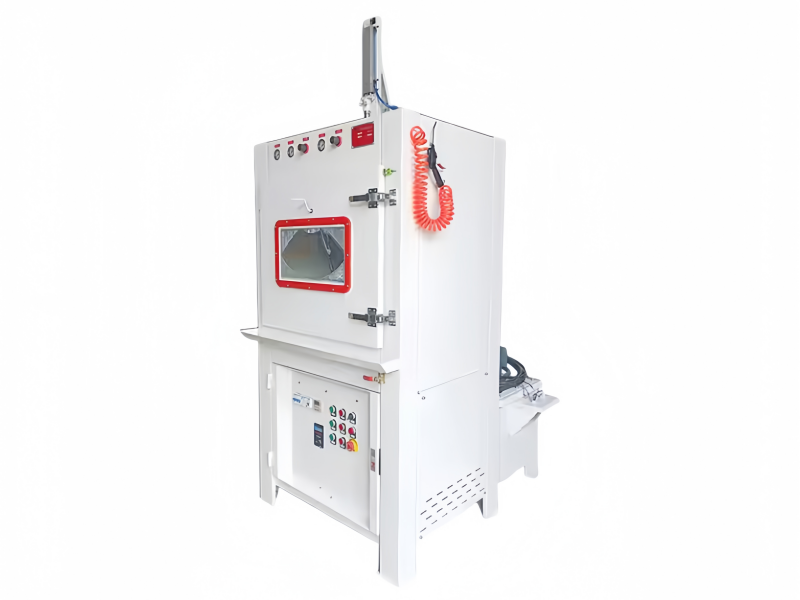

MIZHI
TECHNOLOGY
Hotline
+86-136-8495-9862

Definition
A Wet Sand Blasting Machine, also known as a wet abrasive blasting machine, vapor blasting machine, or slurry blasting machine, is an industrial device that uses a pressurized mixture of water and abrasive media to clean or finish surfaces. This process is an alternative to traditional dry sandblasting and offers several environmental and operational advantages.
Applications
Wet sand blasting machines are used in various industries for:
1.Cleaning and Degreasing: Effective in removing dirt, grease, and contaminants from surfaces.
2.Deburring and Descaling: Removes burrs and scales from metal surfaces.
3.Paint and Chemical Removal: Capable of stripping old paint and chemical coatings.
4.Surface Profiling and Texturing: Ideal for creating specific surface profiles and textures on metals and other substrates.
5.High-Precision Composite Etching: Used for precision etching in bonding applications.



A dustless water sand blasting pot, also known as a wet blast pot, works on the principle of combining water with abrasive media and using compressed air to propel the mixture onto a surface at high speed to achieve cleaning, stripping or other surface preparation tasks. Here's a detailed explanation of its working principle:
Blasting Process
1.When the air compressor starts working, it pressurizes the blast pot and generates a stream of high-pressure air. This high-pressure air flows into the blast pot and mixes with the abrasive media and water.
2.The abrasive media and water form a slurry-like mixture. The high-pressure air acts as the propelling force, carrying the mixture through the blast hose and out of the nozzle at high speed.
3.As the mixture strikes the surface to be treated, the water in the system plays a crucial role. It helps to cushion the impact of the abrasive media on the surface, reducing friction and heat generation. This prevents damage to delicate materials like metal or fiberglass and avoids warping caused by excessive heat.
4.The water also effectively captures and suppresses dust particles produced during the blasting process. When the abrasive media impacts the surface and breaks apart or grinds the contaminants, the dust particles are surrounded and bound by the water, preventing them from becoming airborne. This significantly reduces dust pollution in the surrounding environment and minimizes the risk of dust-related health problems for operators and nearby personnel.